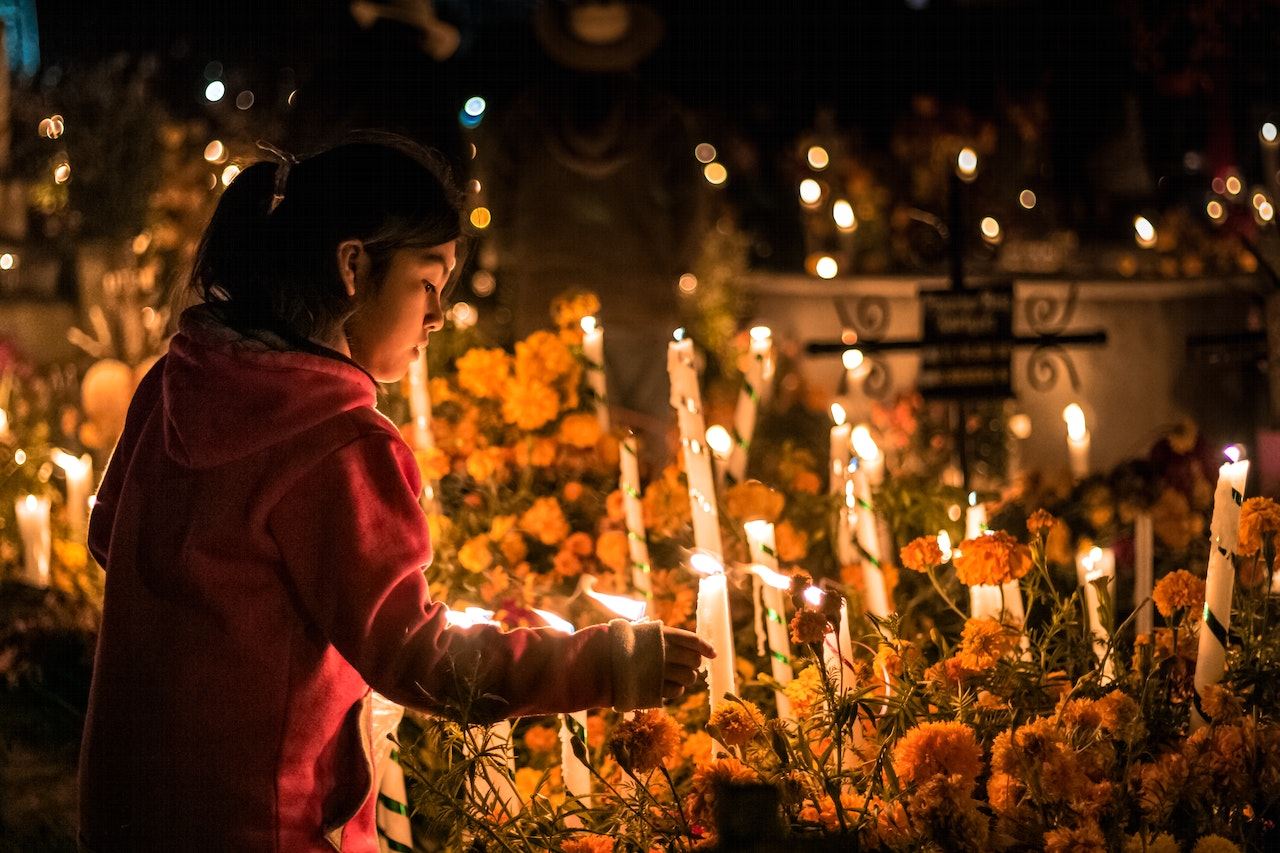By: McCadden, Honey Sweet Harmony
“When we connect with our ancestors and put their wisdom into action, we are evolving our collective consciousness. We are transporting the ancient truths of our collective past and birthing them into our future. What we create out of those truths extends the wisdom of all those who have gone before us, and it provides a guide for all those who will follow.”
―Sherri Mitchell Weh'na Ha'mu Kwasset, Penobscot Nation

As the warm season in the northern hemisphere comes to completion and the cold season begins, many cultures have traditions honoring those who have gone before. We have compiled a new Song Grove to inspire your ancestors’ celebrations.
Some say Halloween’s roots come from the Gaelic holiday of Samhain (“summer’s end), when the completion of the harvest was celebrated with feasting, dance, and bonfires in Ireland, Scotland, and Wales. Samhain is a threshold festival, when it’s said the boundary grows thin between this world and the Otherworld. Humans would offer food and drink to the aos sí ('spirits' or 'fairies') to ensure the people and their livestock survived the winter. The souls of deceased relatives were also thought to revisit their homes, and a place was set at the table and the hearth for them.
By the 11th century, a three-day observance known as Allhallowtide was established in Christian Europe: All Hallows' Eve (31 October), All Hallows' Day (1 November), and All Souls' Day (2 November). All Hallows’ Eve eventually evolved to be Halloween. Irish and Scottish immigrants brought their Halloween traditions to North America/Turtle Island in the 19th century.
Día de los Muertos began in Mexico as a combination of traditions. The Aztecs and other Nahua people in what is now central Mexico understood death as an integral, ever-present part of life in a cyclical Universe. Family provided food, water, and tools to help the souls of the dead in the difficult journey to Mictlán, the final resting place. In medieval Spain, people would decorate the graves of their dearly departed with flowers on All Souls’ Day; they would also light candles to illuminate the dead souls’ way back to their earthly homes, and bring wine and pan de ánimas (spirit bread) to their graves. These inspired the contemporary Day of the Dead practices in which people leave offerings such as food on graves, or place them on makeshift altars called ofrendas in their homes.
By the late 20th century, both Halloween and Día de los Muertos holiday traditions spread globally through human diaspora and transgeographic media such as music and films.
See this blog post’s Part 2 for suggestions of activities to honor the ancestors in your community.
Sources for additional details about these holidays:
History of Samhain
History of Halloween
Halloween Around the World
Day of the Dead
Day of the Dead Origins
.png)